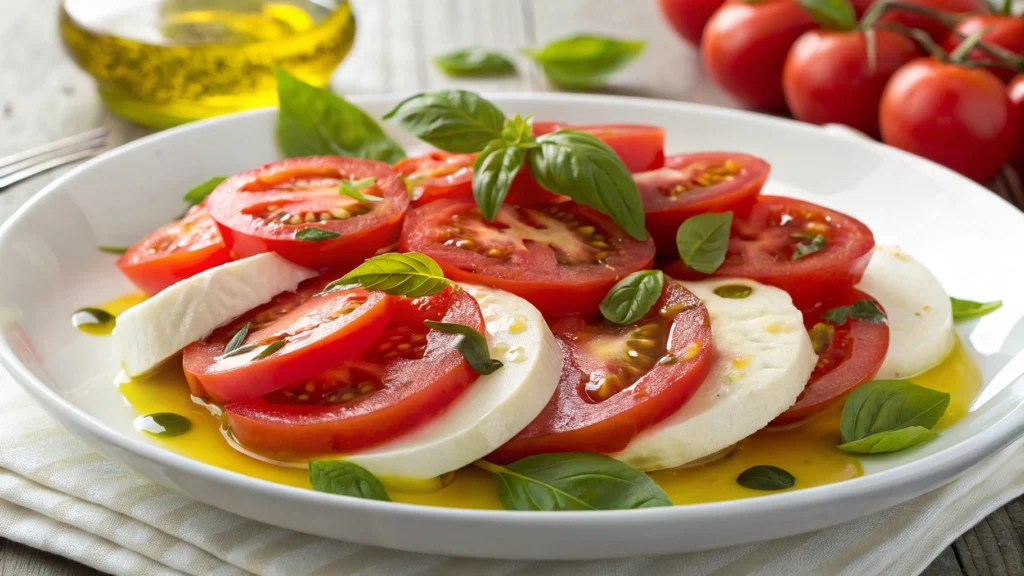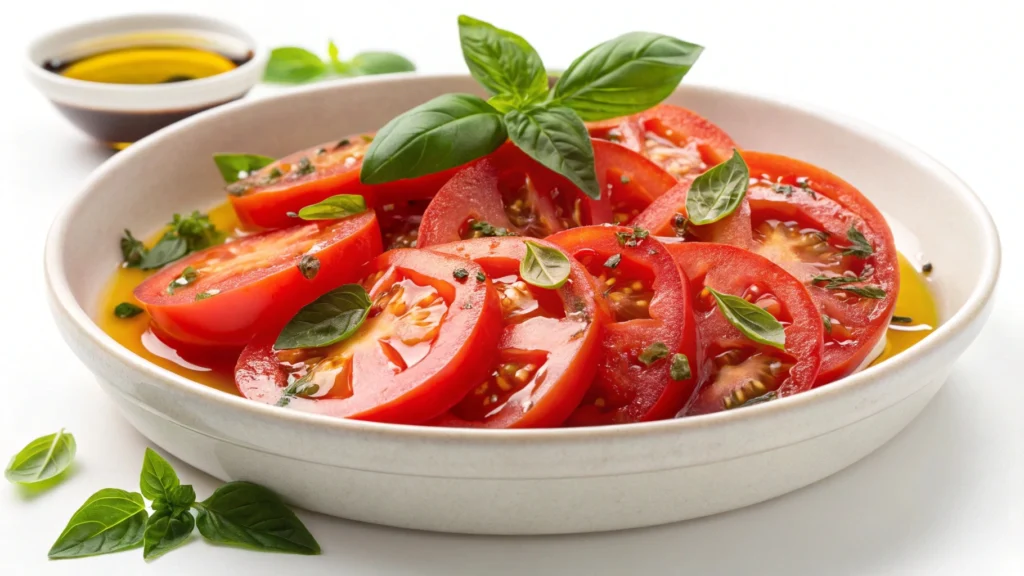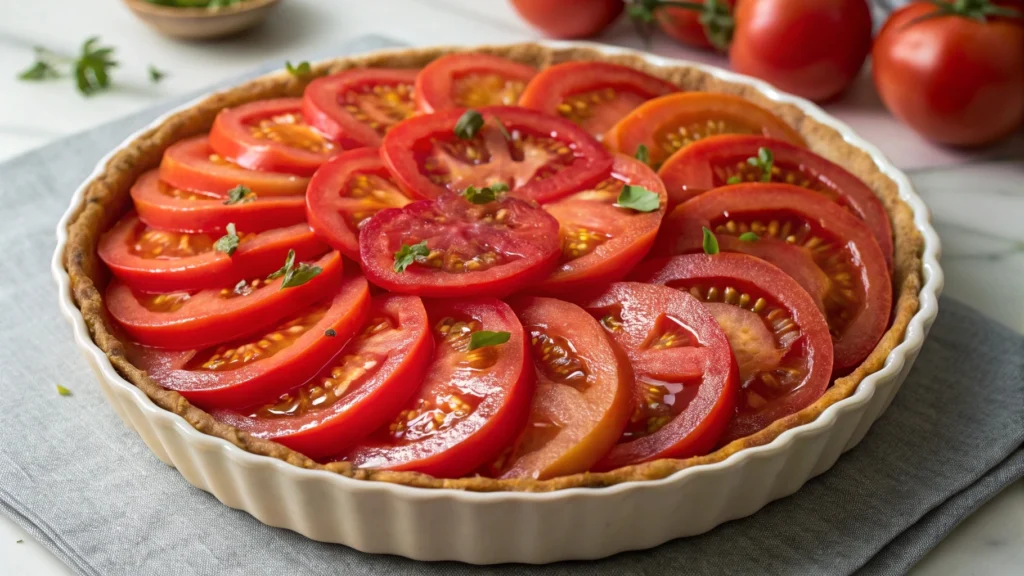Introduction

Have you ever bitten into a perfectly ripe tomato, warm from the sun, and been transported back to a memory of home-cooked meals or summer gardens? Tomatoes are more than just a kitchen staple — they’re a symbol of freshness, flavor, and tradition. Whether you’re a seasoned gardener, a health-conscious cook, or simply someone who loves good food, understanding tomatoes can deepen your appreciation for what’s on your plate. This guide is your companion to everything tomato-related — from planting to plate.
Introduction to Tomatoes
What Are Tomatoes?
- Overview of tomatoes as fruits (botanically) and vegetables (culinary use)
- Belong to the nightshade family (Solanaceae)
- Common colors: red, yellow, green, purple
Brief History and Origins
- Native to western South America and Central America
- Introduced to Europe in the 16th century
- Initially thought to be poisonous
The Scientific Name and Botanical Classification
- Solanum lycopersicum
- Family: Nightshades (includes potatoes, eggplants)
- Botanical details: flowering plant, self-pollinating
Tomatoes in Global Cuisine
- Staple in Italian, Mexican, Indian, and Mediterranean cuisines
- Examples: pasta sauces, salsa, curries, salads
Types of Tomatoes and Their Uses
Common Tomato Varieties
- Roma: best for sauces
- Cherry: salads and snacking
- Beefsteak: sandwiches and burgers
- Heirloom: unique flavors, often grown organically
Best Tomatoes for Cooking vs. Salads
- Cooking: Roma, Plum, San Marzano
- Salads: Cherry, Grape, Heirloom
- Table: Comparison of varieties, texture, and moisture
Fresh vs. Canned Tomatoes: When to Use Each
- Fresh: best in raw dishes and fresh salads
- Canned: ideal for stews, sauces, and soups
- Tips on avoiding metallic aftertaste
How to Choose Ripe Tomatoes
- Look: vibrant color, free of blemishes
- Feel: firm but with slight give
- Smell: sweet and earthy aroma at the stem

Nutritional Value and Health Benefits
Key Nutrients in Tomatoes
- Rich in Vitamin C, Vitamin K, Potassium, Folate
- High in water and fiber
Antioxidants and Their Role in Disease Prevention
- Lycopene: powerful antioxidant linked to reduced cancer risk
- Supports vision and skin health
Tomatoes and Heart Health
- Lycopene helps reduce bad cholesterol (LDL)
- May reduce blood pressure
Are Tomatoes Good for Your Skin?
- Lycopene may protect against UV damage
- Vitamin C boosts collagen production
Growing and Caring for Tomato Plants
How to Grow Tomatoes at Home
- Soil: rich, well-draining, slightly acidic
- Sunlight: 6–8 hours daily
- Watering: deep but infrequent
Container Gardening for Urban Spaces
- Ideal for patios, balconies
- Use 5-gallon containers, proper drainage
Common Pests and Problems
- Aphids, whiteflies, blight
- Natural remedies and prevention tips
Tips for Maximizing Tomato Yield
- Prune suckers, stake or cage plants
- Use organic compost
- Companion planting (e.g., basil, marigolds)

Cooking with Tomatoes
Easy Tomato-Based Recipes to Try
Table: Ingredients for Simple Tomato Basil Pasta
| Ingredient | Quantity |
|---|---|
| Spaghetti | 250g |
| Cherry Tomatoes | 2 cups halved |
| Garlic | 3 cloves minced |
| Olive Oil | 3 tbsp |
| Fresh Basil | Handful |
| Salt & Pepper | To taste |
How to Make Fresh Tomato Sauce from Scratch
- Blanch, peel, and simmer fresh Roma or San Marzano tomatoes
- Add garlic, onion, herbs
- Tips: slow cook for richer flavor
Roasting, Grilling, and Preserving Tomatoes
- Oven-roasting enhances natural sweetness
- How to make sun-dried tomatoes at home
- Canning tips for beginners
How to Store Tomatoe for Maximum Freshness
- Never refrigerate unless cut
- Store stem-side down on the counter
- Use breathable containers
FAQs About Tomatoe
Are Tomatoe a Fruit or a Vegetable?
Botanically a fruit, but commonly used as a vegetable in cooking.
What Is the Best Way to Ripen Tomatoe at Home?
Place in a paper bag with a banana or apple; ethylene speeds ripening.
Can I Grow Tomatoe Indoors?
Yes, with grow lights and proper containers. Choose dwarf varieties.
Why Do Tomatoe Sometimes Taste Bland?
Out-of-season, over-refrigerated, or mass-produced tomatoe lose flavor.
Are Tomatoe Safe for Pets?
The ripe fruit is generally safe in small amounts, but stems and leaves are toxic to pets.

Conclusion: Why Tomatoe Deserve a Spot in Your Life
Tomatoe aren’t just another produce aisle staple — they’re a cornerstone of health, flavor, and cultural history. Whether you’re tossing them in a salad, simmering them in a sauce, or growing them in your backyard, tomatoe bring life to your plate and nutrition to your body. Now that you know everything about tomatoe, from seed to sauce, it’s time to bring them into your daily routine — your kitchen, your garden, and your life.
Call to Action
Loved learning about tomatoe? Share your favorite tomato recipe in the comments, or tag us on social media with your best tomato gardening tip. Don’t forget to subscribe for more seasonal food guides and growing tips.
